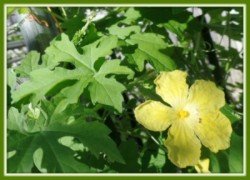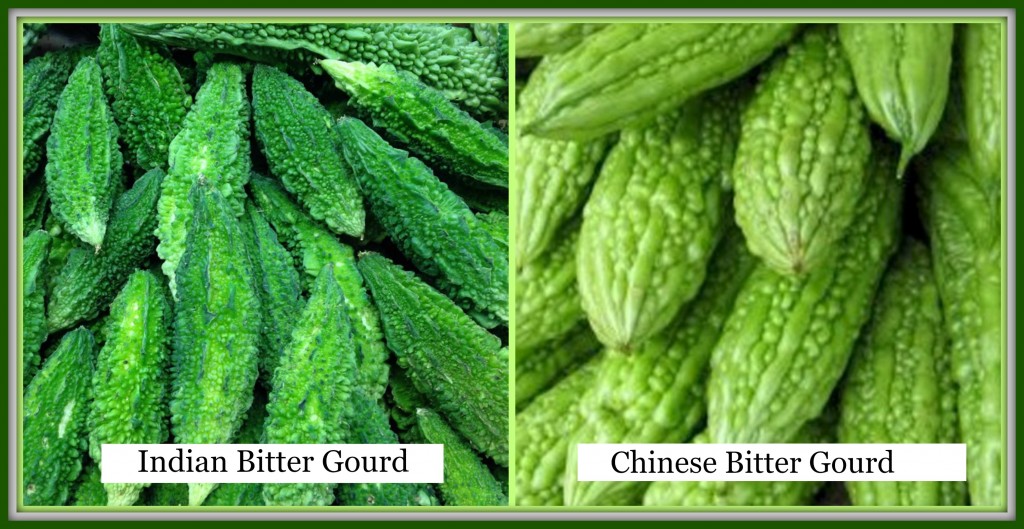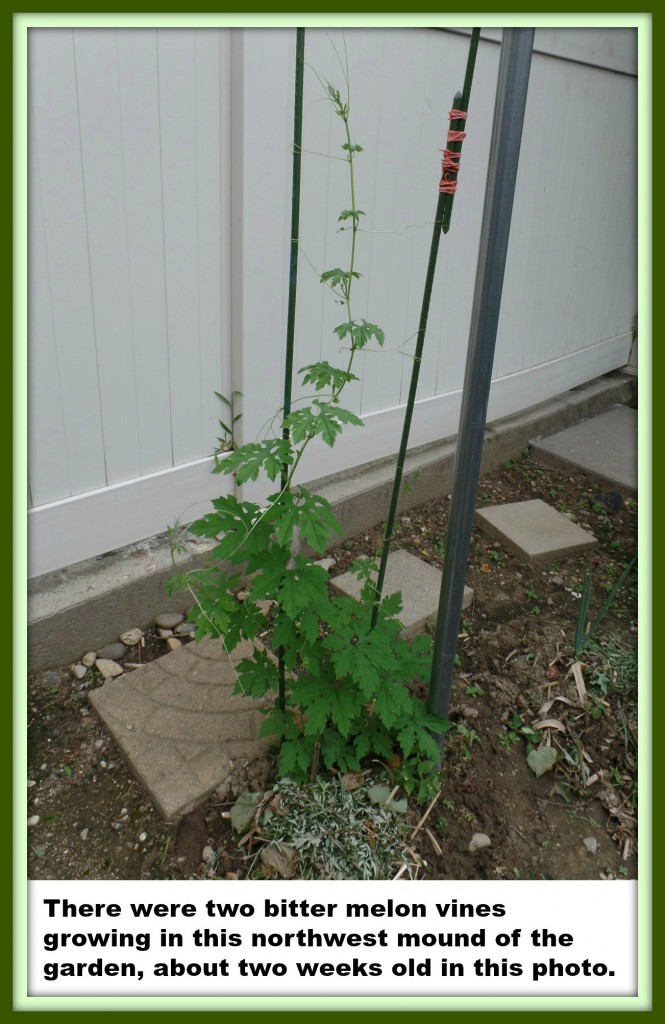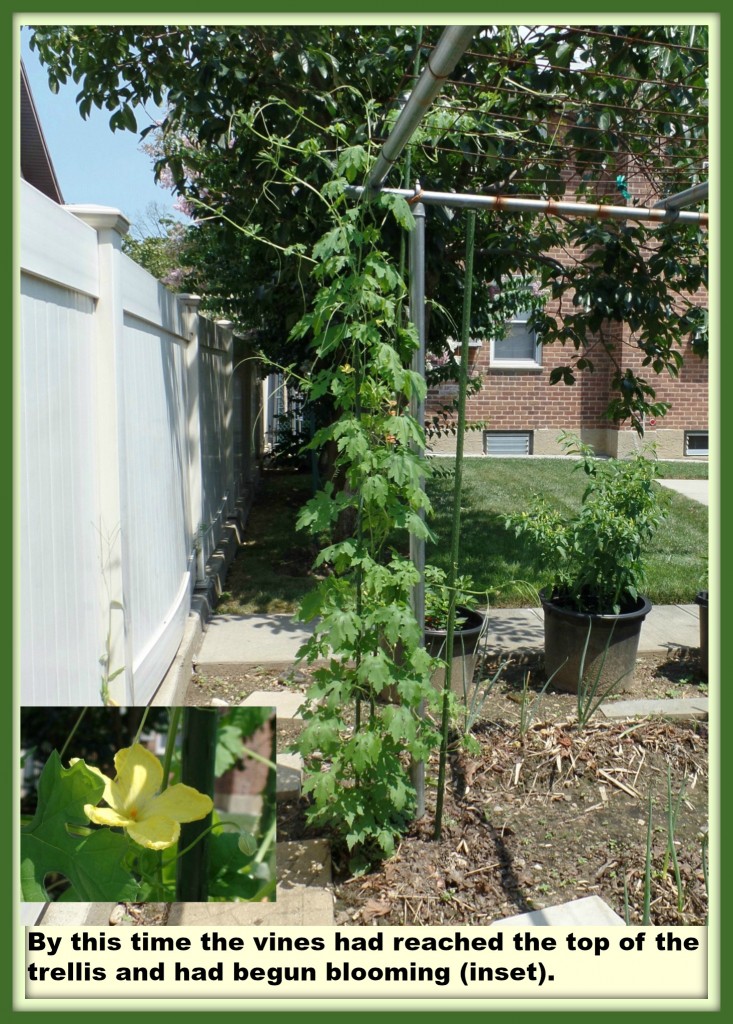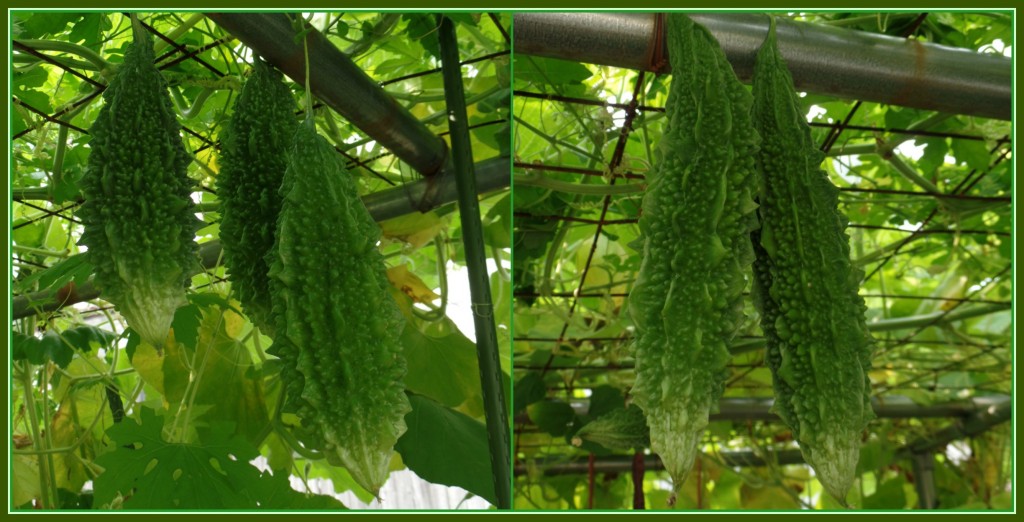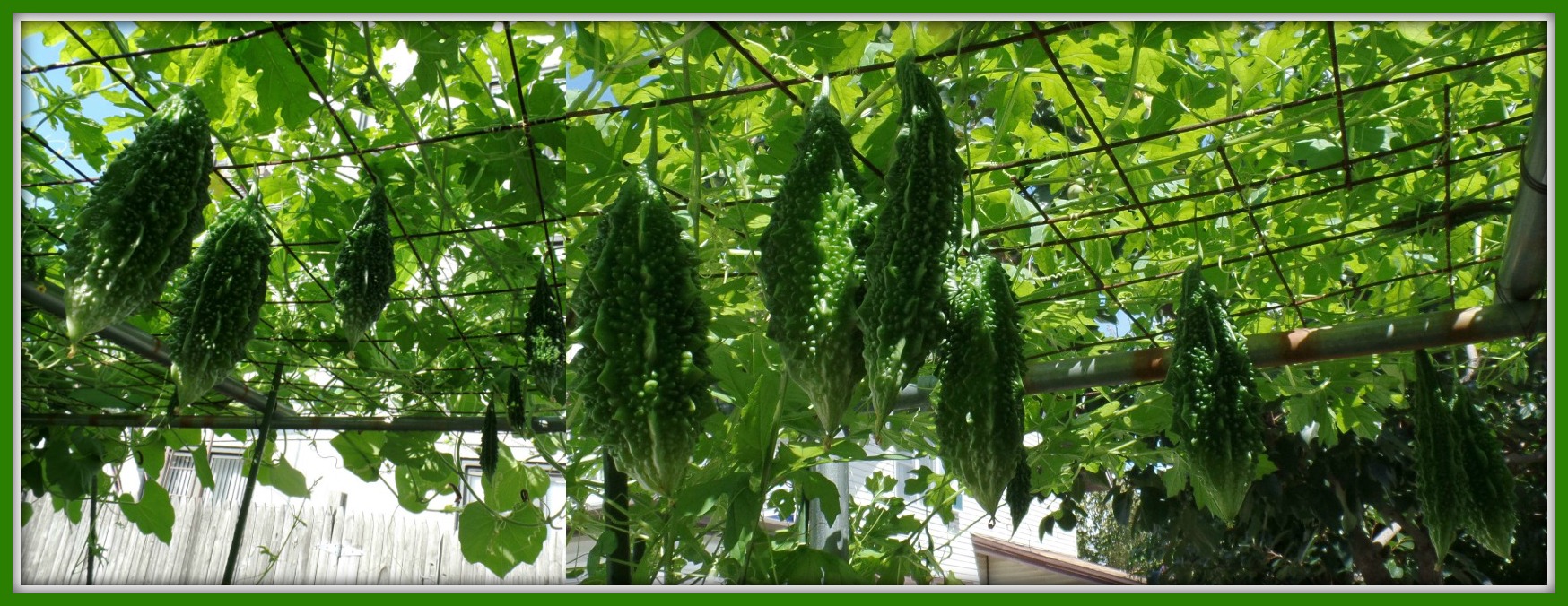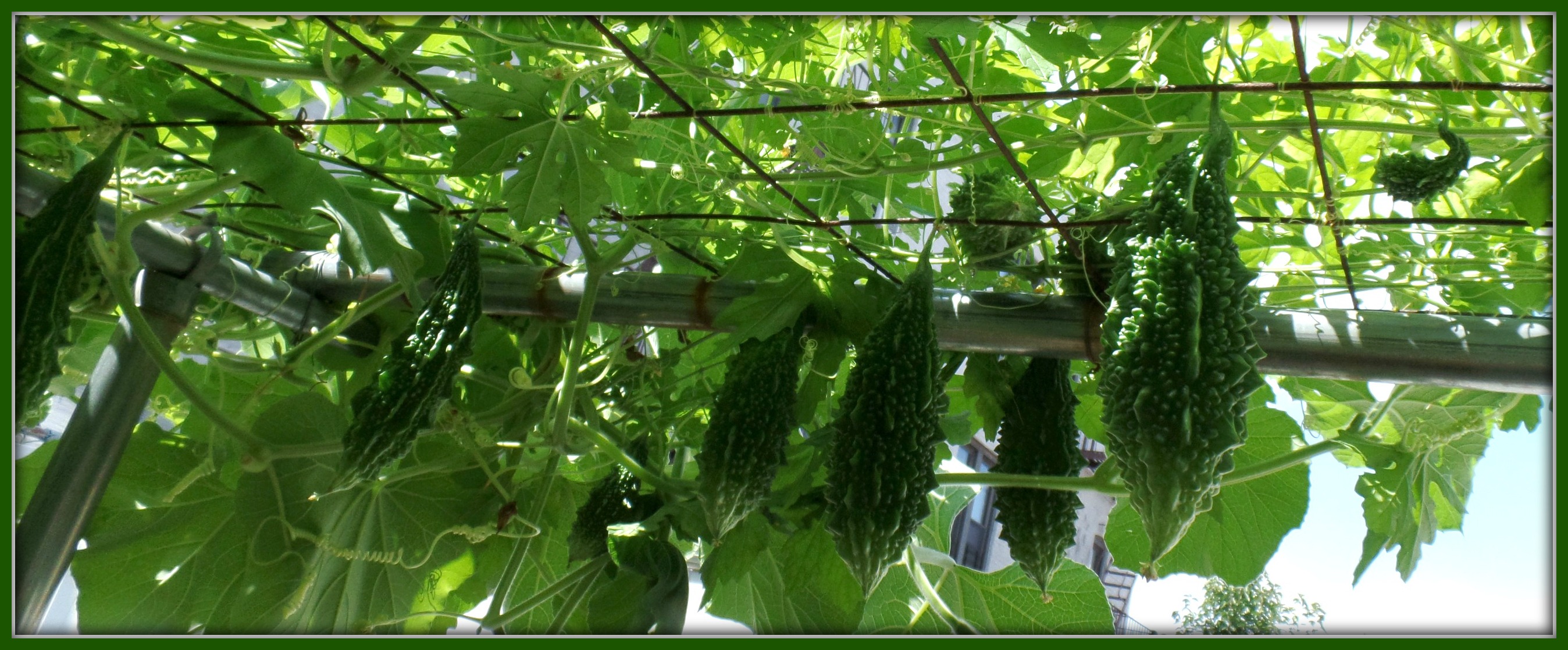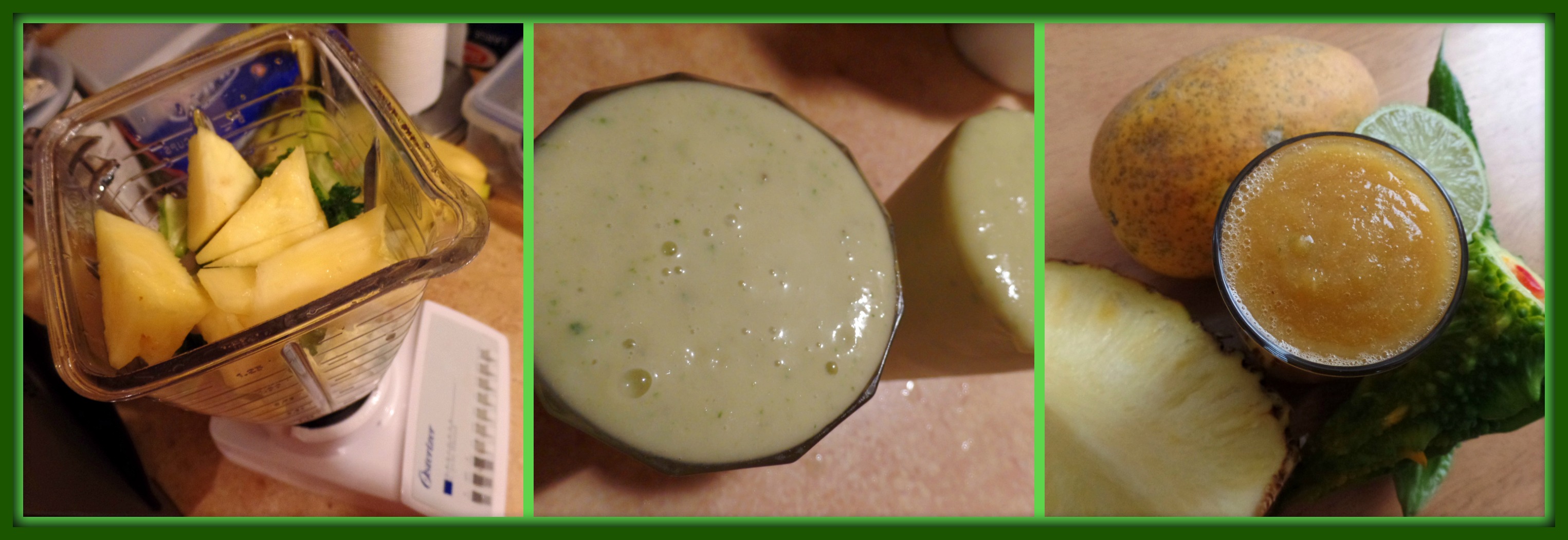Whoa, summer had come and gone and now it’s winter! The holiday season is here! I know, I know, this post is so long overdue. *smirk* No excuses.
I thought I wouldn’t be able to do gardening because my right hand was still weak and painful when Spring brightly rolled in. However, my doctor encouraged me to do so for rehab, as my hand had been in a cast for five weeks. Hence, I did plant some spring onions, sweet potato (camote) stems and buried some Indian bitter melon seeds by the third week of April. Then I got busy and didn’t tend to them until early June when it was already hot summer. The sweet potato stems died from the spring chill, which taught me the lesson (again) that this tropical plant cannot be planted too early. However, the spring onions did very well! They grew lush and green without even watering or weeding. So, I got enthused to re-plant the sweet potato stems and watered them daily. I was looking out for the bitter gourd seedlings but nothing sprouted up. I thought, “Oh well, they probably won’t grow in this soil or I didn’t do something right so they all died.” But by July during a short spell of intermittent sunny-hot and rainy days, I found a few bitter gourd seedlings that sprouted up on the northwest corner of the garden! Was I so excited!
Planting and Tending
There are two types of bitter melons but I chose to grow the Indian type because it reminds me of the ones we used to eat when I was a kid. It is more bitter than the Chinese one so, it should be healthier. The Chinese old folks say that the more bitter a food item is, the more medicinal benefits it has for you. The Chinese type has thicker flesh and its ridges are not as spiky as that of the Indian one.
Now here are some of the most beautiful gardening photos I got last summer!
There were two intertwined bitter gourd plants in the photo above. One was very aggressive whereas the other was sluggish. It was an immensely interesting growing season for me as I learned quite a number of things about bitter gourd.
A total of five seedlings had sprouted by mid-summer but only the first two bore many fruits because they sprouted early enough to take full advantage of the warm season. Hence, the first lesson I learned was that I should follow what the farmers do: Grow the seeds in a sprouting bed long before planting time so the seedlings mature and bear fruit at the same time, and the plants can make the most of the growing season. Bitter gourd would definitely need a warm sprouting environment, so, seeding indoors in early spring would be best.
The next big thing I learned at this stage is that the bitter gourd fruit and leaves may smell pungent but its flower smells divine! Momordica perfume, anyone? You must check it out yourself if you can’t believe (or don’t know it yet) – it smells delicately sweet! Yes, another new thing for me!
By this time I was learning fact number three. Bitter gourd has male and female flowers and it’s the female which turns into fruit. The male flower has an extremely long and thin stem and has a huge, showy bloom. Whereas, the female flower has a very thick and much shorter stem and the bloom is subdued. It was a thrill observing them grow as I became skillful at predicting which bud would turn into a fruit. Yes, was counting my chicks before the eggs hatched! Er, counting my fruits before the buds bloomed, rather.
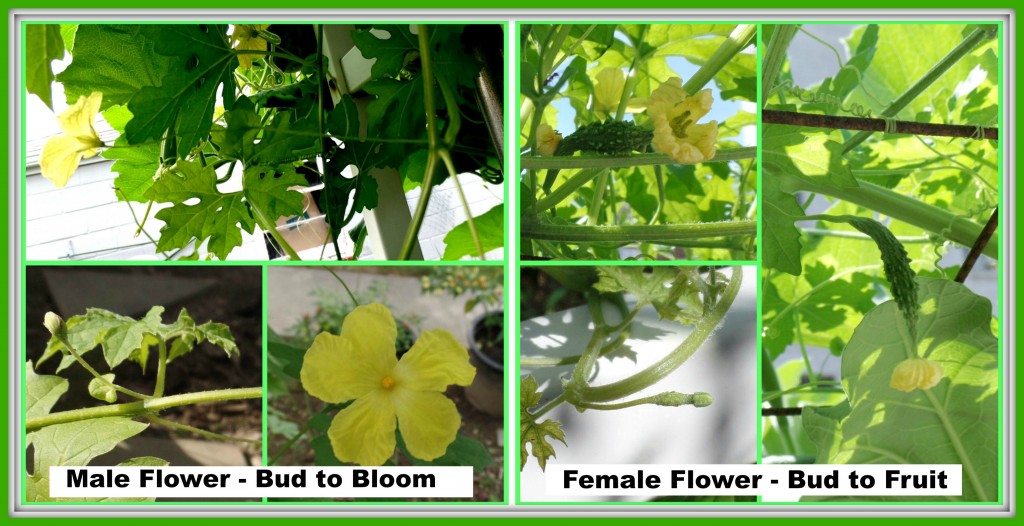
The left collage, clockwise from bottom left: bud to full bloom. The right collage, clockwise from bottom left: female flower from bud to fully-formed fruit.
The top photo in the left collage shows the markedly long and graceful stem of the male flower. Whereas, even the earliest stage of the female flower bud already shows the bulging stem (see bottom left picture of the right collage). This bulbous stem is what fully develops into the edible fruit. The eye-catching male flower, on the other hand, just falls off. Both male and female flowers grow from one plant but the male flowers appear first before the female ones do.

It was the third week of August. After seven weeks of growth I got my first harvest of bitter gourds!
From the two vines in the above picture, I collected a total of 53 fruits by the end of the season! There were also many buds that couldn’t grow to full size when the autumn cold had already set in. Of the 53 fruits I harvested, 41 came from the more aggressive vine and they were rounded in shape. The other 12 fruits were from the lackadaisical one and they were longish. Well, that’s lesson four I learned from growing those bitter gourd plants – there are at least two distinct varieties of this Indian bitter gourd, the rounded and the elongated types. Now I wonder if the elongated kind is naturally slow-growing or it just happened that the seed I planted was not vigorous.
While tending these vines I also observed that when fully grown the main trunk of the vines get really big and hardy, comparable to that of the trunk of grape vines. I pruned my vines to make them more productive and to regulate the number of fruits in each branch, so the fruits would grow to their maximum size. Then I wondered, would these “vine dressing” principles I learned also apply to grapes?
Joe Real, a friend of mine, is in the wine-making business. He is a principal at Healthier Wines, LLC and he said that his company has successfully produced bitter gourd wine and it is doing very well in the market. He also said that some cultivars of grapes have the same leaf shape as that of bitter gourd. Since bitter melon is known for its anti-diabetic properties, they investigated the blood-sugar-lowering effects of bitter melon wine with the help of doctors from the American Red Cross and Stanford University. They verified that drinking the wine does lower blood sugar, and if taken prior to a meal, the glycemic peak load is also reduced. Great news for diabetics, and especially those who love wine! He said, apparently, when God made grape vines for Europeans He did not forget to make a similar vine for Asians: a vegetable having medicinal attributes and one which can also be fermented into wine – bitter gourd! Awesome wisdom, isn’t it? That’s fact-find number five for me!
It was a delight watching these fruits grow bigger everyday, counting the female buds that would grow into fruits, or even just smelling the flowers!
Harvesting
Now let’s look at these garden-picked beauties up close.
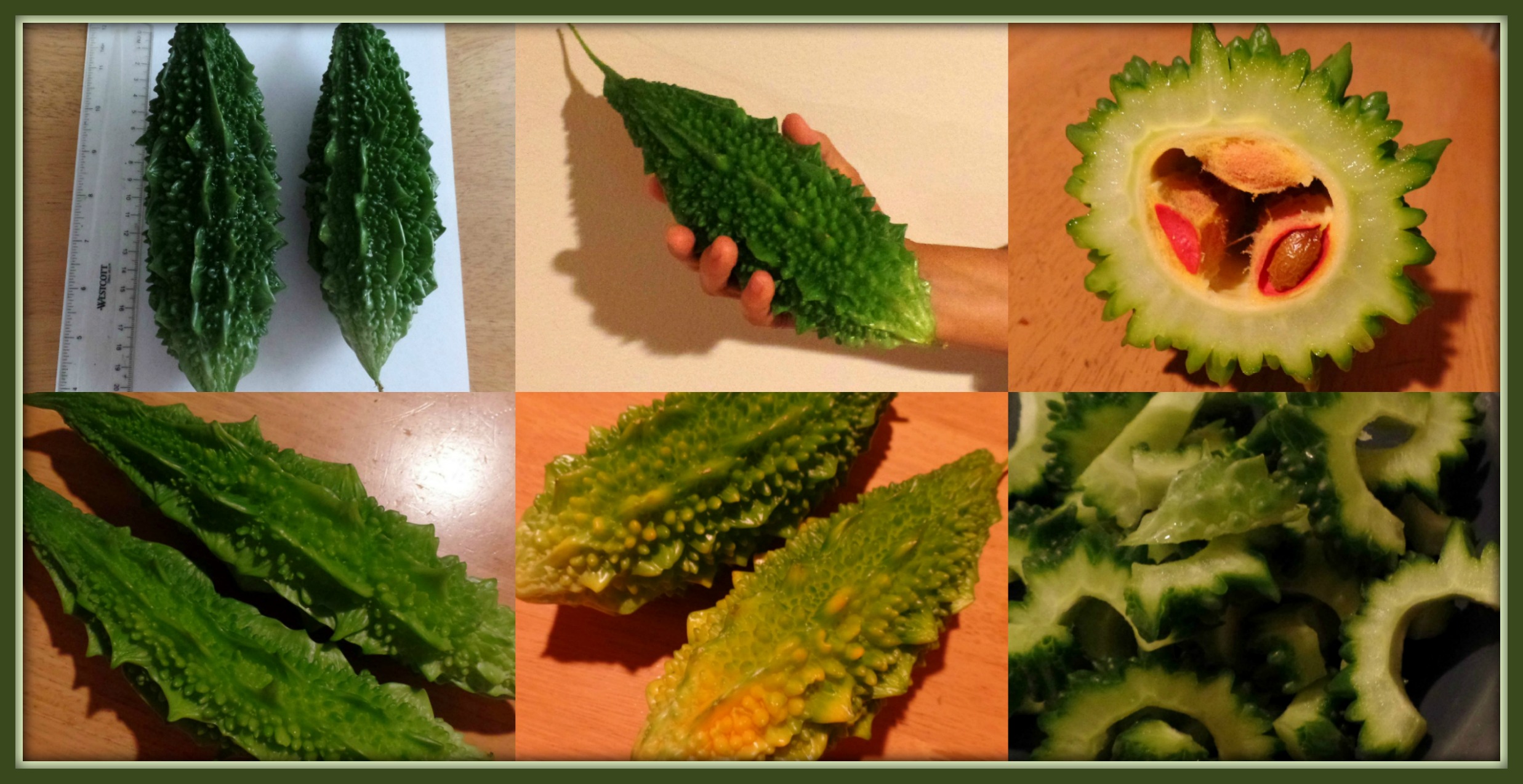
Clockwise from Top Left: The fruits’ average size was 8″x3″; it’s about the size of my hand grip; that’s how the mature fruit looked like inside; bitter gourd de-seeded and chopped up for cooking; some fruits ripened in the vine; the elongated ones had less volume.
Some of the fruits ripened in the vine because we couldn’t consume them fast enough. Were they sweeter when eaten ripe? Nah, bitter just the same, maybe even worse! The elongated ones were definitely smaller than the rounded ones because they had less volume. They just tended to grow lengthwise rather than sideways. So, the rounded variety bore more fruits, in fact more than 200% more than the elongated variety, and its fruits were also bigger. If I were a farmer which variety would I choose to grow next year?
So, what did I do with the so many fruits I harvested? I gave some away and my family and I ate the rest. Our friends said it was super bitter. (Duh, it’s not named bitter melon for nothing.) I actually explored how I could get rid of the bitterness or at least mask it. In the Philippines we would slice it really thin, sprinkle some salt in it and then squeeze some of the juice out by hand. Then we cook it. It does help but I didn’t want to throw away some nutrients from my harvest so I refrained from doing that.
So yes, this became quite exciting! I cooked bitter melon in as many ways I could think of to find out the best way of serving it. That is, where the bitter taste is least noticeable. So, here we go!
Cooking

Clockwise from Top Left: Stuffed bitter gourd drizzled with a light sweet and sour sauce; bitter gourd in mung bean soup with tomatoes and sweet potato leaves; bitter gourd in dhal curry served with homemade flatbread; bitter gourd leaves with pumpkin in coconut milk; stir-fried thin-sliced bitter gourd with chicken pieces; chopped bitter gourd with eggplant and pumpkin simmered in coconut milk.
It was my first time to make stuffed bitter gourd. I had seen it in Chinese cooking and it’s usually steamed or fried. I used a mixture of minced chicken, carrots, cashew nuts, sprouted beans, garlic and silken tofu as stuffing. I steamed it and prepared a light sweet and sour sauce from brown sugar, vinegar and garlic. Was it good? I was hoping the sauce and stuffing would drown the bitterness but no, it was still bitter. And the steaming kind of over-cooked the bitter gourd. It had to be steamed a while to fully cook the stuffing. So, that was the first and last of stuffed bitter gourd for me.
Hence, I got back to cooking it the usual way I know, with mung bean (or any dried beans), coconut milk, in curry and stir-fried. I observed that the flavor-rich coconut milk and the thick-textured beans adequately softened the sharp bitter taste and that must be the reason why it is traditionally cooked with these two favorite ingredients. Whereas, the curry and dhal flavors do compliment the bitter taste and the bland oil that coats the palate when we eat it stir-fried masks the strong bitter taste. So, yes, with bitter melon, I guess we stick to the wisdom of the ages from our forbears. We enjoy it best when cooked traditionally! Simmered with dried beans, coconut milk, curry or sliced thin and stir-fried is the tastiest way to go. That’s lesson six there for me.
I also cooked the leaves because I didn’t want to waste them. I trimmed off quite a bit of vines from pruning and I saved the leaves. Asians do normally eat them. Were they less bitter? Nah, just as bitter! But they taste really good with coconut milk. The sweet and thick pumpkin added interest to the mix but the leaves were also delicious cooked alone in coconut milk. Coconut milk is naturally sweet and has an oomph that goes well with the intense bitter gourd taste. However, I must admit that eating bitter gourd is really an acquired taste. Not many people can take its acute bitterness if they didn’t grow up with it.
Meanwhile, I have heard of people putting bitter gourd fruit in their smoothies or drinking it as juice for health benefits. My daughter loves the mango-pineapple smoothie sold in McDonald’s and I flinch every time I buy it for her because I feel it’s over-priced and I wonder how much fresh fruit is really in it. Last summer it was so hot I myself felt I could use a good fruit smoothie. That was the time when I remembered the osterizer I had moth-balled in the basement years ago. I dug it up from storage and made fresh mango-pineapple smoothie for my daughter. She loved it! Then I thought, “What would happen if I added bitter gourd to this? Will she notice?” I did that and she loved it, too. Then autumn came and I ran out of bitter gourd from my garden. So, I made her smoothie without it and she said the taste was flat. She missed something! Yay! My bitter gourd and fruit smoothie is a winner! Also, because of the fresh smoothies I had been making her, she started buying fresh veggie and fruit smoothies from the shops whenever she was too far from home. Now she says she loves the smoothies she buys but she personally still likes my smoothies for being fresh-tasting. That’s beside the fact that those smoothies she gets from the health shops are much more expensive than McDonald’s! *smirk* Anyway, suffice it to say that bitter melon had influenced my daughter to move on from McDonald’s smoothies to real healthy fresh smoothies! Now my daughters and I enjoy our fruit and bitter melon smoothies! Bitter melon tastes best when cooked traditionally but drinking it fresh in a smoothie is even better! You get the maximum benefits of the fruit and you don’t even have to put up with the bitter taste! It’s hardly even there! Truth number seven! So, is bitter melon bitter and yucky? No, a resounding no! It’s actually “sweet”! Bittersweet, in the least! *chuckle* I usually add a tablespoon of honey to one jug of bitter melon and fruit smoothie.
Towards the end of summer I was eating so much bitter melon in dishes and smoothies that I noticed something else. I noticed a marked improvement in my digestion, it took much longer for me to get hungry and I had less appetite. I knew for sure it was because of its high fiber and water content, it being a melon! High fiber foods take longer to digest and water makes us feel satiated. Fiber and water have zero calories so they help tremendously in weight loss. In fact, if you Google “bitter melon and weight loss” you will get at least a million results! Fact eight! Bitter melon is also known to improve skin health, enhance immunity and may even ward off vision disorders because of its high vitamins A and C. It’s being high-fiber also helps for a healthy bowel movement. But is there something else in it that reduces one’s appetite?
Well, the learning goes on! Are you bitten by bitter gourd enigma yet? I’m enthralled! Please let me know what you think in your comments below.
This has been a long (and interesting?) read, so I must say “adieu,” and till next blog! Merry Christmas!
~.~o~0~o~.~
Bitter Melon or Bitter Gourd is known as “Ampalaya” in the Philippines (“Amargoso” in the central part) , “Peria” in Malaysia, “Nigauri” in Japan (“Goya” in Okinawa), “Karela” in India and Pakistan, “Korola” in Bangladesh, “Kugua” in China and “Mara” in Thailand. It also goes by the names African Cucumber, Balsam Pear, Balsam Apple, Balsambirne, Balsamo, Bitter Apple, Carilla Fruit, Cerasee, Chinli-chih, Cundeamor and many other names. (1) For the botanist, it is Momordica charantia. Bitter melon grows in the tropics all over the world and both its fruit and leaves are food to African, Asian, South American and Caribbean peoples. It is also consumed or applied topically for its medicinal properties.
Despite its rather nasty bitter flavor, bitter melon is a popular vegetable in Asia, cooked either mixed with other ingredients in a casserole, soup, stir-fried or sauteed with scrambled eggs, onions and garlic. The Chinese people traditionally believe that anything that has a bitter taste is good for you because “medicine” is always bitter. True enough, its bitterness comes from its rich antioxidant content made up of phenols, flavonoids, isoflavones, terpenes, anthroquinones, and glucosinolates, the very components that make bitter melon our potent health booster! Bitter melon is also rich in vitamin C, vitamin A, vitamin E, vitamins B1, B2 and B3, as well as vitamin B9 (folate); it is also loaded with minerals including potassium, calcium, zinc, magnesium, phosphorus and iron, and is a good source of dietary fiber.(2) Studies have shown that it has hypoglycemic effects although present-day data have not established that it can be used for treatment. Bitter melon is a traditional medicine for diabetes in India and this is well-reviewed. According to reviewers Joseph and Jini, “Bitter melon is traditionally known for its medicinal properties such as anti-diabetic, anticancer, anti-inflammation, antivirus, and cholesterol-lowering effects.” (2) It contains substances with anti-diabetic properties such as charantin, vicine, and polypeptide-p. These substances are suspected to act like insulin which helps reduce blood sugar levels.(3)
Studies have shown that bitter melon juice has potential in treating pancreatic cancer and can lower bad cholesterol and sugar levels.(4) According to the WebMD website the traditional uses of bitter melon as treatment include: “various stomach and intestinal disorders including gastrointestinal (GI) upset, ulcers, colitis, constipation, and intestinal worms. It is also used for diabetes, kidney stones, fever, a skin condition called psoriasis, and liver disease; to start menstruation; and as supportive treatment for people with HIV/AIDS. Topically, bitter melon is used for deep skin infections (abscesses) and wounds.”
Another site that lists the traditional medicinal uses of this plant is the Rain Tree website. The same website also lists the following side-effects of this plant: abortifacient (may induce contractions in pregnant women), reduces fertility (not recommended for males and females seeking pregnancy), hypoglycemic (not recommended for people with low blood sugar levels), affects friendly flora in the digestive system because of its anti-bacterial properties, hence, taking a one-week break every 21-30 days of continuous use or supplementation with pro-biotics is recommended. (5) A study by Basch, Gabardi and Ulbricht lists other adverse effects that includes hypoglycemic coma and convulsions in children, a favism-like (acute form of hemolytic anemia) syndrome, increases in gamma-glutamyltransferase and alkaline phosphatase levels (indicates liver-related disorders) in animals, and headaches.(6) These adverse reactions are, however, very rare. If one did not grow up eating this vegetable it would be prudent to observe for any signs of contraindications at first ingestion of small amounts.
~.~o~0~o~.~
Bitter Melon is one of the seven fruit and vegetable components of our immuno-booster VG7. It is also available as a supplement by itself, VG Wellness Bitter Melon. In fact, this festive season, we have free shipping!! Click HERE to place your order!
———————————————————————————————-
(1) WebMD Admin. (Undated). Find a Vitamin or Supplement: Bitter Melon. [Web Log Post]. Retrieved Nov 29, 2016 from www.webmd.com
(2) Joseph B. and Jini, D. (2013, Apr). Antidiabetic effects of Momordica charantia (bitter melon) and its medicinal potency. [Web Log Post]. Retrieved Dec 21, 2016 from www.ncbi.nlm.nih.gov
(3) Krawinkel MB, Keding GB. (2006, July). Bitter gourd (Momordica Charantia): A dietary approach to hyperglycemia. [Abstract]. Retrieved Dec 21, 2016 from www.ncbi.nlm.nih.gov
(4) Kaur M, Deep G, Jain AK, Raina K, Agarwal C, Wempe MF, Agarwal R. (2013, July). Bitter melon juice activates cellular energy sensor AMP-activated protein kinase causing apoptotic death of human pancreatic carcinoma cells. [Abstract]. Retrieved Dec 21, 2016 from www.ncbi.nlm.nih.gov
(5) Rain Tree Admin. (2013, Feb 11) Data Base File For: Bitter Melon. [Web Log Post]. Retrieved Dec 21, 2016 from www.rain-tree.com
(6) Basch E, Gabardi S, and Ulbricht C. (2003, Feb 15). Bitter melon (Momordica charantia): a review of efficacy and safety. [Abstract]. Retrieved Dec 21, 2016 from www.ncbi.nlm.nih.gov
————————————————————————
If you wish to cite this blog, citation is as follows: PureJoyLand. (2016, Dec 22). My Bittersweet Summer [Blog Post]. Retrieved from http://purejoyland.com/2016/12/momordica/
